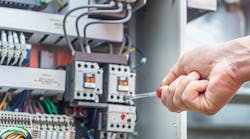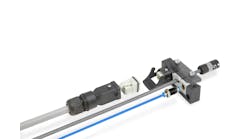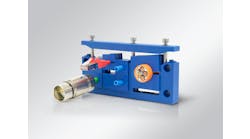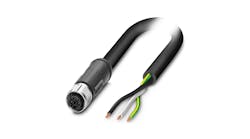We are all wired differently. I am hardwired to just fix things, for example, even if they aren’t broken.
Back in the day, PLCs were seen as the enemy of hardwired relay panels and of companies who made a ton of dough supplying the 18-gauge wire and terminal blocks, as well as the panel builders who also made a ton of dough wiring in these panels with the multitude of relays and timers to make production lines run.
Also read: Which panel design standards are relevant?
Gone are those days of trying to find that loose connection or bad relay coil to fix an automation problem since this control system is now part of a PLC-led process.
Relay panels are history, but hardwiring of systems and devices are not. I have seen many a PLC panel with safety relays, external timers and relays to implement some function that cannot be done internally in the PLC as such.
I am sure that 16/18-gauge wire is still being produced in record amounts, but the application is now very different.
There have been many applications in our distributed-I/O world where no discrete wire is even used. Take a standard photocell with an IP67 connector, for example. There is a cable that is used to connect the unit to a hub, of sorts, typically with an Ethernet connection to the PLC. No wire is needed. But it is still hardwired.
The advent of I/O-based protocols and wiring systems has had an effect on the act of wiring and terminal blocks but not the production of the actual wire. The market for wire and cable has steadily increased from 2016, which is not surprising since it is mainly due to high voltage and residential building. For automation, however, the landscape has changed.
This is not to say that panel builders aren’t the artists of cable trays, wire ducts and tie wraps. Panels of past projects are things of beauty—wire runs and bundles of wire neatly tucked away and numbered with impeccable neatness. There are people who take pride in their panel work, but it is much easier to be an artist when there is less wire.
Another enemy of wire is the advent of wireless devices. Mainly used in the process industries, it displaces the use of and the installation of hardwired devices.
But everything needs power, and, having said that, energy-harvesting techniques have been used for low-power devices. IIoT devices would fall into this category.
So, the usage of control wiring has been reduced in our automation world, but the importance has never been diminished.
When I was beginning my career in an automation supplier’s training program, there was a time that I had to spend on the floor building stuff—motor-control-center (MCC) pan wiring comes to mind, where the devices were wired to terminal blocks in the pan itself. These terminal blocks were there for the customer’s use. There really isn’t any other option in this case. Often there is a PLC in the MCC, as well, for the control component of the system, and thus the I/O would be hardwired between the MCC pans and the PLC section.
Another wonderful experience was hardwiring a discrete digital logic system using 24-gauge wire and a wire wrap tool. Although I jest—it was a real pain—it was my first foray into the world of panel wiring. It taught me the benefits of proper termination, artistry and accuracy and, of course, wire numbering. There is a knack to following a wiring schematic, as I found out.
Hardwiring will always be found in a panel; it’s just a question of how much wire is really used. In my most recent project, we used a PLC with variable-frequency drives communicating over Modbus. The panel was to control a remote sewage pumping station for a local township.
There were a few pilot devices, but the main interface was an HMI, which communicated with the PLC over Ethernet. There were also three level sensors, which had a special interface module that was external to the PLC. The integrator who built the panel wired the control devices directly to the PLC without the use of terminal blocks, which made the panel very tidy. A minimal amount of control wiring was used, but it was required.
Hardwiring will never leave us. It is by far the easiest method of connectivity inside a panel, but perhaps not outside the panel into the real world. As long as there are panels, long live hardwiring.






